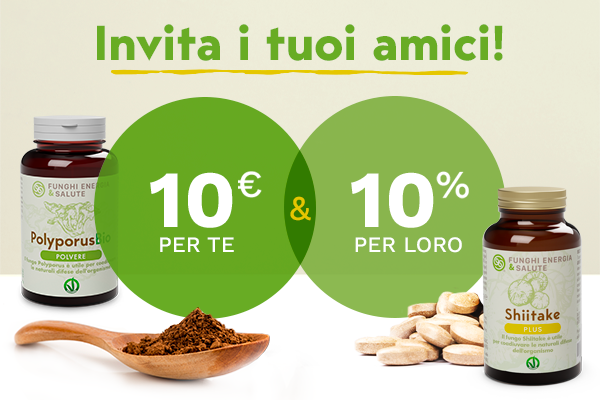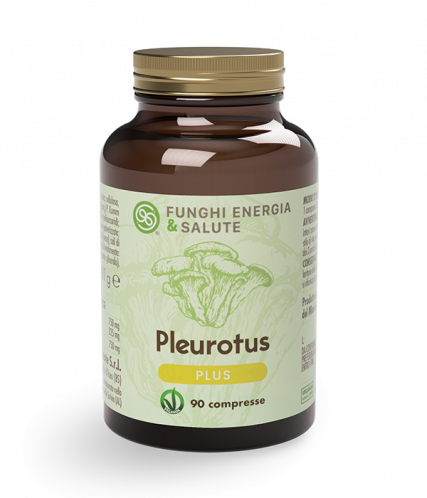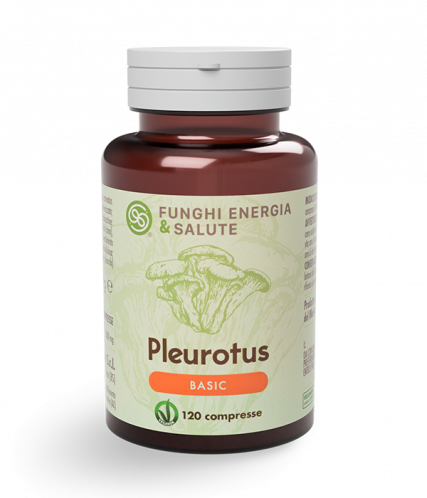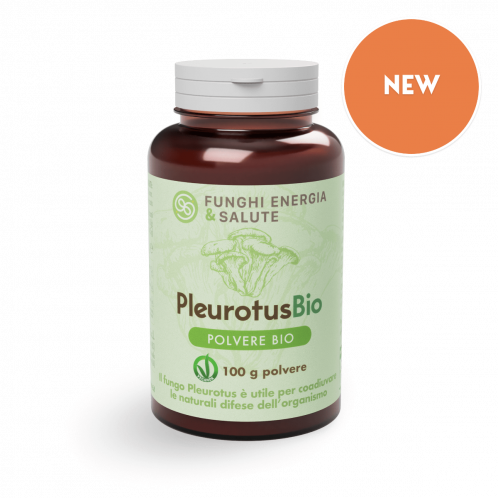Certified Natural products veganOK
030 9881073 Monday to Friday from 09:00 to 17:30
Toggle Nav 



Skip to Content
Language
EN
How can we help you?
Search
Subscribe to the Newsletter
to get immediately a discount code
on your first purchase
to get immediately a discount code
on your first purchase
Pleurotus
- Home
- Pleurotus
Pleurotus
In modern times
The fame of Pleurotus (Pleurotus ostreatus) is due to the research of Dr. Bobek, a researcher at the University of Bratislava (Slovakia), as well as a pioneer of studies on Pleurotus. The professor is one of the world's leading experts on this Medicinal Mushroom: his work has highlighted its numerous benefits in tackling problems related to high cholesterol.
In the last twenty years a lot of research has also appeared from other scientists - Koreans, Americans and Indians - who have confirmed the results of Dr Bobek himself and have further highlighted that Pleurotus protects the liver by increasing its purifying (cytochrome p450) and antioxidant (superoxide dismutase SOD and glutathione GSH) ability.
Ancient tradition
The beneficial properties of Pleurotus have been highlighted quite recently.
This Medicinal Mushroom, in fact, was not used much in ancient times in Traditional Chinese Medicine.
Mycology
Pleurotus (Pleurotus ostreatus) is a saprophytic lignicolous mushroom. The trees preferred by Pleurotus for its nourishment are the beech, the poplar, but also fruit trees. It grows almost all over the world: Asia, Europe, North America and in deciduous forests.
Due to the shape of its cap, which is pearly in colour, it is also called the "oyster mushroom".
It is edible and has a good flavour, which is why it is highly appreciated in cooking and can be found easily, even in supermarkets.
Chemical compounds
In Pleurotus there are several active ingredients, in particular:
- lovastatin, which counteracts hypercholesterolemia. It is the progenitor of the category of statins, chemical drugs used against excess LDL cholesterol (Bobek et al., 1995);
- chitosan, which reduces the intestinal absorption of cholesterol and fats, eliminated through the stools (Synytsya et al., 2009). It is a polysaccharide present in the rigid or semi-rigid structures of different living organisms, for example the exoskeleton of crustaceans and also the cell wall of mushrooms;
- beta-glucans, which have powerful anti-inflammatory (Nosal'ova et al., 2001; Bergendiova et al., 2011), painkilling and broad-spectrum antibiotic effects (Iwalokun et al., 2007);
- alpha-glucans, which together with beta-glucans nourish lactic acid bacteria (Synytsya et al., 2009)
- antioxidant enzymes. Pleurotus is the Medicinal Mushroom with the highest concentration of antioxidants; it is useful for eliminating free radicals, which accelerate aging and cause disease
- cytochrome P-450 (CYP450) is a group of liver enzymes. It represents the main detoxification mechanism of the body against external (such as alcohol, chemicals and drugs) and internal (body's waste products) agents. It is probably the most advanced purification system in nature, present in all mammals and fungi (Bobek and Galbavý, 1999);
- adenosine, a vasodilator and anxiolytic;
- γ-aminobutyric acid (GABA), excellent anxiolytic, with relaxing effects on the mind and muscles at a psychophysical level (Chirinang and Intarapichet, 2009).
Bibliography
- Bergendiova K, Tibenska E, Majtan J. (2011): “Pleuran (β-glucan from Pleurotus ostreatus) supplementation, cellular immune response and respiratory tract infections in athletes.” European journal of applied physiology, 111(9): 2033. Bezalel L, Hadar Y, Cerniglia CE. (1996): “Mineralization of polycyclic aromatic hydrocarbons by the white rot fungus Pleurotus ostreatus.” Applied and environmental microbiology, 62(1): 292-295.
- Bobek P, Galbavý S. (1999): “Hypocholesterolemic and antiatherogenic effect of oyster mushroom (Pleurotus ostreatus) in rabbits.” Nahrung, Oct. 43(5): 339-42.
- Bobek P, Hromadová M, Ozdín L. (1995): “Oyster mushroom (Pleurotus ostreatus) reduces the activity of 3-hydroxy-3-methylglutaryl CoA reductase in rat liver microsomes.” Experientia, 51(6): 589-591.
- Chirinang P, Intarapichet KO. (2009): “Amino acids and antioxidant prop- erties of the oyster mushrooms, Pleurotus ostreatus and Pleurotus sajorcaju.” Science Asia, 35: 326-331.
- Iwalokun BA, Usen UA, Otunba AA, Olukoya DK. (2007): “Comparative phytochemical evaluation, antimicrobial and antioxidant properties of Pleurotus ostreatus.” African Journal of Biotechnology, 6(15): 1732-1739.
- Jayakumar T, Ramesh E, Geraldine P. (2006): “Antioxidant activity of the oyster mushroom, Pleurotus ostreatus, on CCl4-induced liver injury in rats.” Food Chem Toxicol, 44: 1989-96.
- Jayakumar T, Thomas PA, Ramesh E, Geraldine P. (2010): “An extract of the Pleurotus ostreatus mushroom bolsters the glutathione redox system in various organs of aged rats.” Journal of medicinal food, 13(4): 771-778.
- Nosal’ova V, Bobek P, Cerna S, Galbavý S, Stvrtina S. (2001): “Effects of pleuran (beta-glucan isolated from Pleurotus ostreatus) on experimental colitis in rats.” Physiological research/Academia Scientiarum Bohemoslovaca, 50(6): 575- 581.
- Synytsya A, Míčková K, Synytsya A, Jablonský I, Spěváček J, Erban V, Čopíková J. (2009): “Glucans from fruit bodies of cultivated mushrooms Pleurotus ostreatus and Pleurotus eryngii: Structure and potential prebiotic activity.” Carbohydrate Polymers, 76(4): 548-556.





